Top Conspiracy Theories about India’s Demonetisation Mess
Last Updated on July 24, 2019 by Hamad Subani
The sudden demonetisation of large denomination currency notes by the Government of India on 9th November 2016 has created a mix of shock, horror, confusion, speculation and conspiracy theories across the Subcontinent. The Government of India, led by BJP Prime Minister Narendra Modi, claimed that this was a necessary measure because,
- These large denomination notes were being used to hoard “black money” in India. Since demonetisation would require such notes to be deposited in a bank account or exchanged at the bank during a small window of time, the Government, eagerly monitoring the banks, would be able to spy on such “hoarders of black money” and seize/penalize/confiscate their moolah. Those who did not deposit their “black money” would be expected to sit crying while it turned into toilet paper after the deposit window expired. (And those of you without access to a bank account in India are expected to hang on these currency notes as souvenirs).
- A very big portion of these notes was being counterfeited by a foreign power(s).
Since these arguments are too simplistic to suffice readers of this website, Cabal Times presents the Top Demonetisation Conspiracy Theories currently swirling across the Subcontinent.
As I have said before, my economic perspective has always been that of the Austrian School of Economics, which advocates gold-backed currency (or gold as currency). And India’s Demonetisation Mess only vindicates this perspective. The fact that a Government could suddenly disavow and illegalize legal tender that it once issued, completely stripping it of any value whatsoever, has shaken confidence not just in the Indian Rupee, but in the very concept of “legal tender.” This could not have been possible if the currency was gold-based (gold coin, or gold threads in notepaper), as the precious metal would itself retain its own market value, even if the Government would declare it worthless.

One of the notes that is now illegal to use. It features Mahatma Gandhi leading his followers…..but not to a bank to exchange the note.
Conspiracy Theory #1: The Demonetisation was necessary because Pakistan was counterfeiting Indian money in very large numbers
Credit: The Government of India
Prior to the Demonetisation, there were rumblings of widespread unrest in Indian Kashmir. If Pakistan was indeed flooding the valley with counterfeit notes, it needed more than an Epson® All-In-One machine. It could not have done so without a little help from good ol’ Bhaaai, who happens to be an expert in such practices. For example, prior to orchestrating the Iranian “Islamic” Revolution in 1970, the Powers That Be ensured beforehand that the Revolutionaries would be able to print American dollars to suit their needs. To quote,
Years earlier, in the late sixties or early seventies, the CIA had secretly provided to the Shah of Iran a perfect set of printing plates that could reproduce US$100 bills without blemish. Also provided was an intaglio printing press. This special printing press ensures that the etched plate meets paper with tremendous force, creating the distinctive embossed feel of a genuine banknote. In addition, the Shah was also given the ink and banknote quality paper enabling him to produce perfect counterfeit US Dollar banknotes. The Shah later fled Iran and left the plates and press behind in his confusion. The whole caboodle sat in the mint at Tehran, according to some experts.
If India is indeed dealing with a Western Intelligence Agency, they will not be able to stay one step ahead for long. And this only strengthens the case for gold.
There is another reason why a gold-backed (or gold-based) currency is suitable for India. Although the people of the Subcontinent may have never cared to acknowledge it, they have already subscribed to the ideals of the Austrian School of Economics ages before it came into existence. The volatile political climate of India which featured repeated invasions and economic disruptions, meant that most Indians were always skeptical of paper currency and instead preferred gold. As a result, most well-to-do Hindus also doubled as amateur goldsmiths. A Turkic-Muslim ruler Mohammed Bin Tughluq tried to force a brass and copper currency (and then a leather one) but failed miserably. India is the biggest producer of gold jewelry. And Indian gold jewelry is more oriented towards weight and mass, rather than the delicacy and ornateness of Western jewelry. This is because gold jewelry is considered as an investment (or a source of emergency funds) for women. Indian women learnt to attach it to their person, long before bank lockers came into existence. Another great argument for gold-based currency in India is that Indians have already become adept at determining the purity of gold, which is done using simple instruments (as opposed to the sophisticated electronic gadgets that are used to detect counterfeits in banknotes).
Very rarely do Governments officially endorse a Conspiracy Theory. But this is exactly what happened on 9th November 2016. Several unanswered questions remain.
-
Governments usually never release estimates of counterfeits in circulation, because this undermines faith in their currency. Yet fingers were pointed to sudden increases in the circulation of large denomination notes, causing irreparable damage to the Indian Rupee. Outsiders with connections to India will be careful to always get rid of their Indian Rupees rather than once again being stuck with a wad of them. Foreign Exchanges are likely to shun the Indian Rupee rather than risk being stuck with “illegal” currency. Indian Banks, which suddenly proved that they could prevent you from accessing your hard-earned “white” money (except in measly amounts due to shortages in the newly printed replacement notes) have also lost their credibility.
-
Why was the Demonetisation not restricted to sensitive areas where such counterfeit Rupees were allegedly being used, such as Indian Kashmir?
-
Did the Indian Government really assume that “terrorists” too, would line up in front of banks with bags of cash to exchange their banknotes and end up being busted?
-
Do “terrorists” have bank accounts in Indian Kashmir? (Sorry couldn’t resist).
The biggest argument against this Conspiracy Theory is that the Demonetisation may have actually helped counterfeiters of all shades exchange their bad notes for good ones. Banks were working overtime, with their tired, grumpy staff having minimal time and attention for detecting counterfeit currency.
But again, the rush of patriotism was a welcome relief for the Modi Government. The poor guy standing in line in front of the bank momentarily became euphoric of the many jawans he had saved on the border. Commercials were released, featuring jawans discussing how the Demonetisation was more effective than a ceasefire. But this proved to be untrue when Pakistan yet again violated the ceasefire, and some dead terrorists were found to be carrying the new replacement notes.
Conspiracy Theory #2: The Demonetisation was necessary to bail out banks some very rich people with ties to the Government
Credit: Arvind Kejriwal / Aam Aadmi Party
This theory is a rather complex one, but Arvind Kejriwal is waving several binders full of official papers, claiming to have “proof” of it. This is how it works.
-
Major Government owned banks, such as the State Bank of India, have been corrupted into giving very huge loans to shady industrialists, such as the BJP-friendly buffoon entrepreneur Vijay Mallya, who has now fled India for Britain, with obvious collusion of the highest levels of authority in India. The total amount of such bad loans goes up to 800000 Crores (an astronomical amount).
-
These banks were ordered to “forgive” such loans, but could not do so without risking their own bankruptcy.
-
These banks secretly “forgave” many bad loans immediately following the Demonetisation. The sudden deposits of old currency and limits on withdrawal ballooned their assets and lending power.
A spinoff of this conspiracy theory circulating on WhatsApp® goes on to claim that Demonetisation was intended to rattle Government Owned Banks which constitute the majority of Indian Banks, and that three private banks were provided with a disproportionately large surplus of cash in new notes compared to Government Banks. This means that Government Banks = Longer Queues. This is yet to be verified.
According to sources, the group [Modi’s group] zeroed in on demonetization for the following reasons: (a) it would root out black money by rendering undeclared income in high denomination notes invalid and unusable; (b) ensure liquidity in banks reeling under Non-Performing Assets amounting to over Rs 6.30 lakh crore; (c) it would derail the election plans of opposition parties and immobilize a big chunk of their funds in two key poll-bound states—UP and Punjab.
Ajith Pillai, 'Demonetization: The Plot Unravels'UPDATE: If you that your money was safe in the bank, Modi Nirav Modi will LoU it.
Update: Vijay Mallya and the 2016 Demonetization Mess….Guess who the real “Kingfisher” turned out to be?

Mallya got “Kingfished” by some bigger fish.
Efforts were made to trace the $40 million last paid to to Mallya. In response, Mallya filed a counter-affidavit claiming the money had been transferred to his direct family, who are not Indian citizens or Indian residents. As proof, he enclosed a letter from his banker Edmond De Rothschild, which is addressed to the Supreme Court of India. In an unpublicized journalistic coup, Great Game India obtained and published this letter in December 2016. Moral of the story: If you are looting money from the citizenry of India, having the Rothschilds as your banker ensures that you are covered. Even 1.3 billion Indians will not be able to pry it out of there. Read on…..
Conspiracy Theory # 3: The Demonetisation and War on “Black Money” is a Foreign/Globalist Strategy for Destroying India’s Emerging Middle Class
Credit: Cabal Times
In India, there are two perspectives on “Black Money.”
- Money that has been obtained illegally is sometimes dubbed as “Black Money.”
- Money that has not been declared to the taxman, that has not been taxed, is part of the “underground economy” is also called “Black Money.” This would mean that most Indians who live below the poverty level, and who are thus exempt from income tax (and are too illiterate to file) are literally sloshing in “Black Money.”
This would mean that most Indians who live below the poverty level are literally sloshing in “Black Money.”
A better currency, such as a gold-backed (or gold-based) currency would not solve these problems. But again, the nature of these “problems” is subjective. Consider the following:
-
India is still a poor, agriculture-based country, with most of its population living below the poverty level. A Princely State that once straddled South India prior to Independence made rapid economic progress in similar conditions by limiting Government intrusion and repressive taxation.
- While the Government helps itself to gratuitous amounts of taxes whenever it spots declared income and revenue, services provided in return tend to be sparse.
-
India has always had an underground economy for ages. According to Uttar Pradesh Chief Minister Akhilesh Yadav, “”I am very clear on this…black money should not be generated. Economic experts say the magnitude of the global economic crisis at times is not felt in India because of strong (parallel) economy of black money.” In other words, this underground economy is what has prevented the poor of India from going extinct throughout the ages, and it somewhat insulates India from the Boom-Bust cycle of Wall Street and other Global Economic downturns.
-
There is evidence that many had advance knowledge of the Demonetisation, and had already taken care of their “Black Money.”
Different countries have different perspectives on “Black Money.” The Swiss would still be making cheese in summer (and timepieces in winter) were it not for “Black Money” being parked into their country, which they have learnt to manage like wizards. New countries like the UAE have got even more creative, and have welcomed “Black Money” as a development boon (Be my guest). Although not coincidental, UAE launched an advertising campaign six days ago urging Indians to come and “shop.” Why then does India, a nation whose population are largely materialist, shop-keeping-oriented, entrepreneurial, accounting-oriented and business-minded shun “Black Money”? The answer lies in the assassination of Mahatma Gandhi. The Mahatma had formulations for how Indian society and Indian economy was supposed to operate after Independence. The Powers That Be wanted none of it, and only allowed some token aspects of his theories to be adopted (such as the promotion of village-based cottage industries). Instead, Socialism was forced down on the Indian people after Independence, which is completely at odds with Gandhian thought. The objective was to prevent a Middle Class from emerging in India by associating private capital and private industry with sin.
[…….] The black economy, which, according to my estimate is 62 percent of GDP […….] this move does not sort out the black economy but creates problems for the whole economy. The point is that black economy has not been created yesterday. It has been growing for 70 years. So this problem can’t be solved overnight [……..] Black economy and white economy are largely intertwined in India. So when you sell your real estate property you generate black and white income simultaneously. When you produce sugar, you don’t show 10 percent and show 90 percent of the output. That’s why when the black economy is affected the white economy is also affected. This move, which is supposed to impact the black economy, is affecting the white economy terribly. Demand is going down. As someone gave a very good analogy, if you take out 85 percent blood from somebody’s body and then put five percent into it, what will happen to that person? He will die. Similarly, when you take out 85 percent liquidity from the economy and slowly replace it by five percent, then the circulation of income goes down.
Prof. Arun Kumar, an authority on Black Money in IndiaIn my analysis of Illuminati Economic Policy, I have always come to the same conclusion that the societies they tend to create consist of a small, extremely rich cabal and the remainder grapple with extreme poverty and survival issues throughout their lives. These two groups tend to be adversaries of each other. Therefore the target of the Illuminati is always the Middle Class. Even the most powerful Middle Class in history, the American one, is on its way to extinction. While Socialism was indeed “protective” of the poor of India in some aspects, it always ensured that they never graduated towards a stronger Middle Class. Any such graduates would be immediately targeted by repressive taxation measures and mowed down. The extremely rich knew their way around such measures, and were thus unaffected. Unlike the West, where property rights became firmly entrenched, it became normative of the Government in India to raid, acquire, “nationalise,” seize, confiscate what they deemed fit. Ownership of private property and even private goods was subject so all sorts of unwarranted drama. For example, an acquaintance leaving India for studying in USA in 1960 had to “entry” on his Indian passport the amount of American dollars he had purchased in India for the journey (which was not to exceed $50). Simple transactions, like buying a scooter required all sorts of bookings, registrations and affidavits. Buying property would lead to investigations about sources of income. And thus “Black Money” carries a certain sin-like connotation in India, even though not all “Black Money” is obtained illegally or unlawfully. Despite such repression, the Hindu merchant class miraculously survived by dickering through all sorts of loopholes. The more draconian aspects of Socialism in India came to an end in the 90s, when the reforms initiated by Rajiv Gandhi began to kick in. And some say he paid with his life for this perfidy. Since then, the Indian economy is growing. And for the first time ever since the Mughals created an agricultural boom centuries ago, a Middle Class is emerging.
The recent Demonetisation and “Black Money” saga is the rumbling of an abrupt change in India’s Economic Direction. What is more ironic is that this change was initiated by a BJP government, which has had the support of the purely capitalist Hindu merchant class of North-East India. With the Congress party abandoning Socialist style intervention long ago, the BJP reviving “Black Money” for castigation in a style reminiscent of the days of Nehru makes things even more mysterious.
If you think Western cabals like the Illuminati no longer have any say in Indian politics, think again. They are currently nailing the coffin of the American Middle Class, which was the most powerful Middle Class in history. On the eve of being liberated from British rule, they assassinated Mahatma Gandhi, the man who successfully led the Independence Movement. And they instituted Socialism to thwart the emergence of a Middle Class. One can only imagine what India would have been like had the reforms of Rajiv Gandhi taken place in 1950.

© David Parkins / The Economist
Hold your elephants. The Indian middle class conjured up by the marketers and consultants scarcely exists. Firms peddling anything much beyond soap, matches and phone-credit are targeting a minuscule slice of the population. The top 1% of Indian adults, a rich enclave of 8m inhabitants making at least $20,000 a year, equates to roughly Hong Kong in terms of population and average income. The next 9% is akin to central Europe, in the middle of the global wealth pack. The next 40% of India’s population neatly mirrors its combined South Asian poor neighbours, Bangladesh and Pakistan. The remaining half-billion or so are on a par with the most destitute bits of Africa. To be sure, global companies take the markets of central Europe seriously. Plenty of fortunes have been made there. But they are no China.
'India has a hole where its middle class should be,' The Economist, 13th Jauary 2018
India’s GDP per person, compared to China. ©The Economist
- “Even after years of enticing customers with heavily discounted wares, perhaps 50m online shoppers are active in India—roughly, the richest 5-10% of the population, says Arya Sen of Jefferies, an investment bank.”
- “Apple made 0.7% of its global revenues there in the year to March 2017. Facebook, though it has 241m users in India, probably the most in the world in one country, registered revenues of just $51m in the same period. Google is growing more slowly in India than in the rest of the world.”
- “Starbucks says it has big plans for India but has opened about one new coffee shop a month over the past two years, bringing its total to around 100—on a par with Utah or the United Arab Emirates. A new Starbucks opens in China every 15 hours, adding to 3,000 already operating.”
- “There is one car or lorry for every 45 Indians, according to OICA, a trade group. The Chinese own five times as many.”
- “All India’s domestic airlines are no larger than Ryanair, the world’s fifth-biggest carrier, according to FlightGlobal, a consultancy. SpiceJet, an airline, says that 97% of Indians have never flown. A mere 20m Indians travelled abroad in 2015, about one in 40 adults.”
- “Inditex, Zara’s parent firm, has 46 clothes shops in India, fewer than in Ireland, Lithuania or Kazakhstan. For the kind of goods the global middle class aspires to own at least, executives whether at global or local firms clock the number of potential customers at 50m and no more.”
- “India’s mean GDP per head is just $1,700, and 80% of the population makes less than that. Adjust for purchasing-power parity by factoring in the cheaper cost of goods and services in India and you can bump the mean up to $6,600. But that is less than half the figure for China (see chart 2) and a quarter of that for Russia.”
- “One in ten Indian adults had an annual income of more than $3,150 in 2014. That leaves only 78m Indians making close to $10 a day.”
- “More than 99% of the Indian population are in the same league as Americans that count as below the poverty line.”
- “The top 1% of Indians, indeed, are squeezing out the rest. They earn 22% of the entire income pool.”
- “At the turn of the century, the richest 10% of Indians made 40% of national income, about the same as the 40% below them.”
- “In absolute terms, India has wealth roughly comparable to Switzerland (population 8m) or South Korea (51m).”
- “Over 90% of workers are employed in the informal sector; most firms are not large or productive enough to pay anything approaching middle-class wages.”

India’s Middle Class versus other classes. ©The Economist
Conspiracy Theory #4: The Demonetisation is tied to Modi’s Electoral Promise
Credit: Based on Comments made by the Prime Minister of India
While bribing the electorate to vote for a particular party is illegal, some Western politicians have developed a more ingenious approach to doing the same. They bribe the electorate by having money appear in their bank accounts while they are in power. This is usually a desperate and reckless measure, as real commitment to the electorate requires hard work and strategic planning, the fruits of which are usually not immediately apparent or tangible. This approach of shuffling around wealth rather than creating it is usually termed as Robbing Peter to pay Paul. When Canada’s French population of Quebec started supporting a separatist party pushing for their own nation, Prime Minister Pierre Trudeau (father of current Prime Minister Justin Trudeau) had money start appearing in the bank accounts of seniors all over Canada, along with all sorts of freebies and goodies for the citizenry of Canada. This included the seniors of Quebec, who realised that voting for separation would mean giving up a lot of these benefits. The downside of this reckless measure is that taxation pervades every aspect of Canadian life. Canada has been left far behind, compared to neighbouring USA, when it comes to industry. And the current Canadian generation consists mainly of man-childs and woman-childs who are so dependent on State handouts and State infrastructure that they probably would not survive a single winter without them. French Canadians now grudgingly have to support the “War on Terror” and whatever maladies emerge from Ottawa.
Redistributing a portion of “Black Money” sounded like an easier way to create a support base.
But it doesn’t seem like this Conspiracy Theory is working. 20 lakhs wont appear in bank accounts because the estimate on which this was made was mainly on foreign “Black Money.” Modi pointedly mentioned that he would be going after “foreign” “Black Money.” In reality this proved to be very difficult to achieve. The pioneers of stashing Indian capital in Swiss banks happen to be businessmen from his own State of Gujrat. One particular community whose name I will not mention has a practice of allotting semi-anonymous, numbered Swiss bank accounts to boys once they reach adolescence, as some kind of rite of passage. In their defence, they claim this is how they survived Nehru’s Socialism.
Perhaps an unintended side-effect of the Demonetisation is a temporary reduction in inflation. But it is likely that the Government will catch up by operating the printing presses overtime. Disregard that, the Finance Minister just announced that instead of catching up by printing more and more, they will issue “digital currency,” which requires inputting numbers using a $15 keyboard. This is exactly how the US Federal Reserve creates hyperinflation.
Conspiracy Theory #5: The Demonetisation is a Globalist/Foreign Strategy of Forcing a Cashless, Surveillance Society on India
Credit: Based on Comments made by the Prime Minister of India
It need not be whispered anymore. The Prime Minister is asking us to go cashless, implying that a cashless society is just around the corner. Card swiping machines are being distributed in rural villages like candy.
But why?
This is a bad idea even for a “developed” Western country, which is the reason why none of them are completely “cashless.”
-
Credit cards are primarily responsible for the overwhelming personal debts incurred by people in the West.
-
Credit and Debit cards now account for most the fraud perpetuated in person and online.
-
The older generation, especially the pre-PC typewriter generation, cannot be made to adopt online banking, and sometimes even ATM cards. Forcing them to so puts them at immense risk of fraud.
- Credit card and Debit card transactions are not free. Many Mom and Pop stores in North America do not allow credit cards (Cash or Debit only Please) because the credit card companies make them pay huge amounts for every transaction. This is especially true for the points/rewards/cashback credit cards. The credit card companies actually charge the stores for these freebies. Logically, the credit card companies should be paying the stores for allowing their credit cards to be used, because it is these very stores that help the credit card user fall into debt.
- Card swiping machines are not free and usually come with a separate monthly bill.

The man who shagged the IRS, Sagar Thakkar, alias Shaggy. He was making up to $100,000 a day until the IRS, in collaboration with the Indian Government, crashed the party. While what he did was criminal, the story also highlights how Americans have become conditioned to opening their wallets for the IRS, no questions asked.
For India, this becomes an even worse idea
-
India currently lacks the infrastructure for a cashless society, with the exception of some urban areas. Where infrastructure does exist, Electricity and Internet outages are the norm.
-
India faces an existential threat of war. An attack on Critical Electrical installations and Internet Relay Centers can completely shut down economic activity if a sizeable portion of Indian Society goes cashless.
-
Most Indians are illiterate. Going cashless makes them even more vulnerable to fraud. I have seen poor old people in ATM queues, who have their PINS written down on their ATM cards, and who would not mind somebody else helping them input the numbers. This is why Indian ATMs, unlike Western ones, also feature a guard who is on 24 hour duty.
-
Going online in rural India means sitting in a dirty cubicle for Rs. 40 per hour, with a computer running on a pirated version of Windows® XP Service Pack 1 and with an outdated Antivirus. Of course, this is not what PM Modi means when he urges us to go online. He wants us to use our smartphone apps, presuming we have a data plan.
-
Of those Indians who are literate, some Gujratis are at the cutting edge of global, organised, electronic fraud. The number one position is currently occupied by Nigerians. Indians are at number two. Unlike Nigerians, Indian fraudsters don’t have the patience to cultivate relationships with their targets through email, and instead use brute force grandstanding and cold calling, such as pretending to be the IRS and “Ma’am your computer is emitting viruses.” (Suggested Response: O RLY? I only have a washing machine). There is even one scam among Gujratis based in North America, who scour the phonebook for Indian names and ring them up claiming to be Immigration Authorities. It is only a matter of time before they bring a New York Telephone Directory to India and start cold-calling all the Steins, Bergs, Pearls, Rubys, Silvers and Golds they can find in it, requesting donations for AIPAC.
-
The major reason Indian fraudsters go out of their way to target Americans is that most of their fellow Indians have yet to go cashless. But when they do, they will shift their attention to India. This will be even more convenient. No need to worry about their different accent raising suspicion. No need to pay Western Union® to wire the money to India.
-
Indian Law Enforcement lacks the personnel and resources to deal with electronic fraud. Even banks refuse to accommodate simple requests in person, such as the blocking of an ATM card and instead thrust a form into their customers’ faces. This can be fairly daunting for those lacking English literacy.
[…….] This means that 73 percent Indians have no internet access. Also, of the total 34.2 crore net users in the country, only 13 percent are in rural India. India may have 102 crore mobile subscribers but only 17 percent adults have smart phones which can download apps. So the task of turning India digital is stupendous. Even the spread of banks is such that of the 1.38 lakh branches, only 47,000 are in rural India. The spread of ATMs is also skewed with 90 percent in 16 states and a sizeable number in urban centers. A huge majority of the unlettered population do not trust banks and find it inconvenient to operate accounts. One estimate is that 80 percent of the population for all practical purposes are unbanked.
Ajith Pillai, 'Demonetization: The Plot Unravels'[……] the administration forgot to factor in the planting season and the requirements of famers. It forgot to factor in that more than 60 percent of the people live in villages and are dependent on agriculture.Yogesh Tiwari, 'Demonetization: Did the RBI Goof Up?'
Could it be that The Powers That Be, taking advantage of Indian naiveté regarding technology (a lot of urban Indians equate cashless with cool), are trying to force down a cashless society on India, which will be even more dystopian and Orwellian than Western societies? Western societies have become wary of biometrics. On the other hand, India has plunged headlong into biometrics with the Aadhar card, a personal ID card which is tied to your biometrics. This move was lauded throughout the Western media. Evidently, the Powers That Be thought that India could provide an example for reluctant Western citizenry.
Just prior to the demonetisation, an Indian conglomerate named Reliance launched a mobile network named Jio. This was different from other existing mobile networks in that it was focused on providing data, and even routing calls through the Internet, rather than the mobile network. What was odd is that Jio went to great lengths to promote the Aadhar card for customers to get access to its services. So now you have a private company providing Mobile Data, going out of its way to promote a creepy biometric-based government identification card. And now, your data and your Internet browsing will be inextricably linked to your biometric ID. Conspiracy Theories swirling on Indian WhatsApp® groups take aim at Urjit Patel, the Governor of the Reserve Bank of India, who is currently overseeing the Demonetisation. From 1997 to 2006, he was the President (Business Development) of Reliance Industries. While it is true that the government is promoting the Aadhar card following Demonetisation, links between Reliance Group, Jio and the Demonetisation have yet to be proven, even though they do make for enthusiastic WhatsApp® based conspiracy theories.
On November 10, two days after demonetization was announced, a new entrant to the payments bank sector was incorporated. The outfit, Jio Payments Bank Ltd (JPBL), is a joint venture of Reliance Industries Ltd and State Bank of India. The company has received initial approval from the RBI to operate. The fact that Reliance Jio has tied up with SBI, the largest PSU bank, is considered significant. Many industry sources say that the newly incorporated company may be the largest beneficiary of the government’s cashless drive given the nationwide network of the SBI.
Ajith Pillai, 'Demonetization: The Plot Unravels'Having personal biometric data linked to private Internet data and browsing history is a wet dream of foreign Intelligence Agencies, such as the NSA. They are currently storing all Internet related data on literally everyone on the globe because technology has made data storage cheap. And because Internet infrastructure is very America-centric and since most major services on the Internet are based in Silicon valley, most Internet data passes through American servers. Imagine the ramifications. Lets suppose a certain Mr. Singh gets promoted as Commander of India’s Submarine Fleet. And lets suppose Mr. Singh had earlier in his life, obtained an Aadhar card, and signed up with a Mobile Data Service that is linked to his Aadhar card. Lets call the Mobile Data Service Marro, and lets assume that its partly owned by a CIA front named Blackstone Tech. The Powers That Be would normally have to do all sorts of laborious groundwork and realtime spying to know more about Mr. Singh and his private life. But in this scenario, they can tie up the real Mr. Singh (biometric data will ensure that all other Singhs in the creation will be excluded) with already stored browsing activity and data sessions. They will know what Social Media services he uses, they will know who his email service provider, they will know the contents of his private emails going back to several years, they will know what kind of personal smartphone and/or personal computer he uses, they will know who his banker is, they will know his travel itinerary, they will know the contacts on his cellphone, they will be able to access and play previous phone calls that were routed through the Internet. They will even know what kind of porn he faps to (if he does).
Having personal biometric data linked to private Internet data and browsing history is a wet dream of foreign Intelligence Agencies.
If a foreign power is engaged in intensive spying on India (and yes, according to data leaked by Snowden, India is a target of the NSA), then their biggest challenge would be to associate all the Internet data with individual members of the population. This insurmountable challenge is being solved at the expense of the Indian taxpayer.

The Aadhar card gives the United States the ability to pinpoint Indians for secret drone strikes (and maybe open drone warfare in the future, as in the case of the NWFP region of Pakistan). Source ©GreatGameIndia.
 UPDATE: Was India’s 2016 “Cashless Society” Experiment Made in China?
UPDATE: Was India’s 2016 “Cashless Society” Experiment Made in China?
Now, a recent WIRED cover story dated 14th December 2017 gives a detailed insider account of how The Powers That Be have created a cashless, surveillance society in urban China. Was this the blueprint for what was attempted in India in November 2016? This raises an alarming possibility that Globalists are actively Chinafying India. It is only natural that their model of imposing control over the vast population of India would be based on what they have already successfully established in China. Read on……
UPDATE: Why did Google code a phone number owned by them as the “UIDAI helpline number” into Android releases destined for India? Are they covertly managing the Aadhar project?
— Google India (@GoogleIndia) August 3, 2018
UPDATE: Aadhar Dare goes wrong for TRAI Chief
To show confidence in the system, Sharma, on 28 July, threw an open challenge on Twitter, by revealing his 12-digit Aadhaar number and asking (more like, challenging) if it made him vulnerable to any security risk. Soon after, Elliot Alderson, a French security researcher who has exposed Aadhaar vulnerabilities in the past as well as flaws in Patanjali’s Kimbho and Bolo Messenger apps, revealed some of Sharma’s personal data in a series of tweets. This included his personal address, birth date, email, alternate phone number and PAN number. He then tried explaining to the TRAI chief why it wasn’t a good idea to make his Aadhaar number public. Read On….
Conspiracy Theory # 6: The Demonetisation and Ensuing “Black Money” Witchhunt is an attempt to siphon India’s Gold Reserves
Credit: Cabal Times
As I have said before, India has proven to be a tough cookie to the Globalists because Indians have unknowingly subscribed to the Austrian School of Economics for Ages. This means that Indian people hold very large amounts of gold privately. It is impossible to survey how much gold Indians hold. But we can comfortably estimate that the total amount might dwarf the estimate of gold that was once kept at Fort Knox to back the US dollar till 1971. You probably never heard of Indian Gold Reserves because all they do is gather dust. Indians tend to cash them only in emergencies. The Globalists seem to have appropriated the gold at Fort Knox. And globally, they are busy taking over gold mines. They are even discouraging gold as jewelry, promoting diamonds instead, because Diamonds are Forever (Wrong: Rothschilds De Beers controls all major diamond mines, giving them liberty to inflate prices forever). Such campaigns have been undertaken with great cost and effort in India as well. But forcing Indian women to part with their gold jewelry will be a tough sell. The first step will be vilifying gold, associating it with “Black Money” and terrorists.
The first step will be vilifying gold.
A Glimpse into Illuminati Projects in India’s Past
The Powers That Be are enforcing such monumental change because India is not that foreign to them. They have been here before. They have conquered and colonised it. And no, I am not referring to the British who left officially left in 1947. The story goes even deeper.
In a recent submission to Prof. Henry Makow’s website, an author argues that ancient Greece was not the cradle of Democracy as often portrayed. It was instead the most perfect mind-control-based totalitarian state in Antiquity. Establishment historians would like us to believe that Alexander the Great, a product of this Illuminati society, came marching down from Greece to the Subcontinent in 326 BC for the thrill of it. And that his Greek followers succumbed to illness, addiction and homesickness in the Subcontinent, putting a sad end to this misadventure. In reality, these crafty “Greeks” kept advancing through deceit and psychological warfare, catching the locals completely off guard. They entrenched themselves in the Indian Subcontinent, and through women, infiltrated several local kingdoms and took them over. Their biggest achievement would be what would become known as the Mauryan Empire in India, and later, several Buddhist Empires in the Far East.
Does this sound like the conquest of Indian society by a tiny, nefarious, alien cabal, fearfully outnumbered, yet hell-bent on destroying the preexisting economy and society?

Almost all depictions of the Buddha show him in a cross-legged pose, which is more difficult than it looks like (unless you are into yoga). Some conspiracy theorists see it as symbolic of the cross, which is actually a pre-Christian symbol. Some depictions of the Buddha show Greek features as well.
Here’s how Miles Mathis critiques some of the more misanthropic Buddhist concepts.
[……..] the Buddha actually surpasses Jesus in vilifying Nature herself. Not only is sex a sin, death is a sin. That makes Nature, and the cycle of life, a sin. Jesus recommends an ascetic life, like the Buddha, but he never positions himself as the enemy of death or of reproduction or of the cycles of Nature. Jesus damned the poor fruit tree for failing to bear, but the Buddha would praise it for having achieved mukti. [………]
To my eye, Nirvana appears to be a death wish, suicide without the knife. Notice that the Buddha has defined craving and desire as afflictions. Not just negative cravings or desires, or destructive cravings or desires, but all cravings and desires. A man desiring to kiss his wife: an affliction. A woman desiring to have a child, and to caress that child, and to feed that child: an affliction. A bird enjoying flight: afflicted. A fish craving to eat a fly: afflicted. A dog enjoying a bone: afflicted. A thirsty man drinking from a clear stream: afflicted. Nirvana is not deathlessness, it is lifelessness. Nirvana is not the opposite of death, life is the opposite of death. Life is deathlessness. But the Buddha has fled from life. He cannot abide it.
[According to Buddhist tenets] Perfect wisdom is all knowledge destroyed. The ultimate religious contradiction, the purest poison […….].
[…….] Yes, the Buddha had reached Nirvana, and now had a desire to preach it. “Because he would convert the world he went on toward Benares.” Big contradictions. Having rid himself of all desires, the Buddha desired to preach and proselytize and convert the world to his superior wisdom.
[……..]At least pain is some real sensation: we may imagine that in a diseased mind it is close enough to pleasure to stand for it. But the Buddha does not allow these men, these poor Brahmakarins in the forest, even that consolation. He wants them instead to seek a death-like trance, devoid of all thought, desire, and memory.
[………] Anger is not dark. Sorrow is not dark. Hatred is not dark. All can be used. All are but various forms of light. Even death is not dark. Krishna was right: if you weren’t meant to be here, you wouldn’t be here. Those who are born are born for experience, not to avoid experience. If you were meant to avoid experience, you could do that very well in the quiet bosom of God. Because you are here, we must assume that Nature imagined she had some use for you here. You are like the little bird pushed from the nest by its mother, for its own good. If the baby bird sits on the ground refusing to fly, and only meditates on the warmth of its mother’s feathers, we do not call that baby bird holy. We call him food for foxes.
The foxes grew fat in India. But thankfully, things did not go as planned for the “Greeks,” or whoever they were. A few centuries later, they were met with such vengeful resistance that they literally went underground. According to some, the Ajanta and Ellora caves were their last refuge, constructed as a secret time capsule of their “accomplishments” in India. But even these were not spared. Such strong was the backlash against Buddhism that even today, those seeking to learn Buddhism go to Tibet and the Far East, not the land where the Buddha once walked.
Lets hope The Powers That Be are also aware of the Subcontinent’s historic potential for resistance.


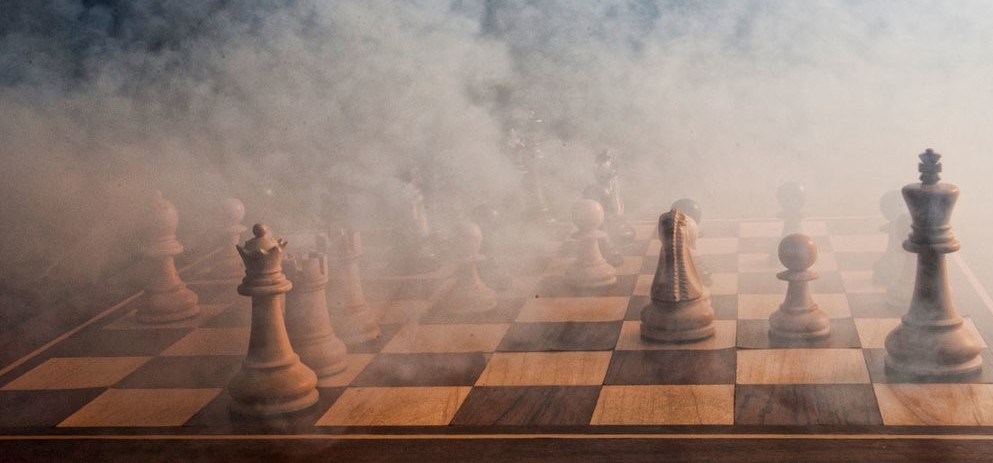


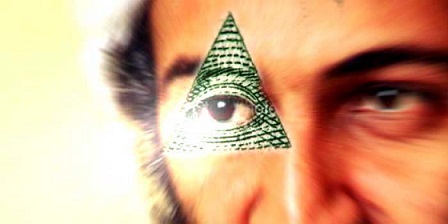
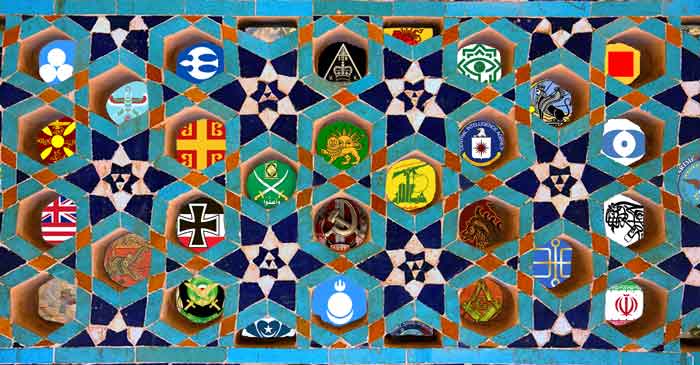


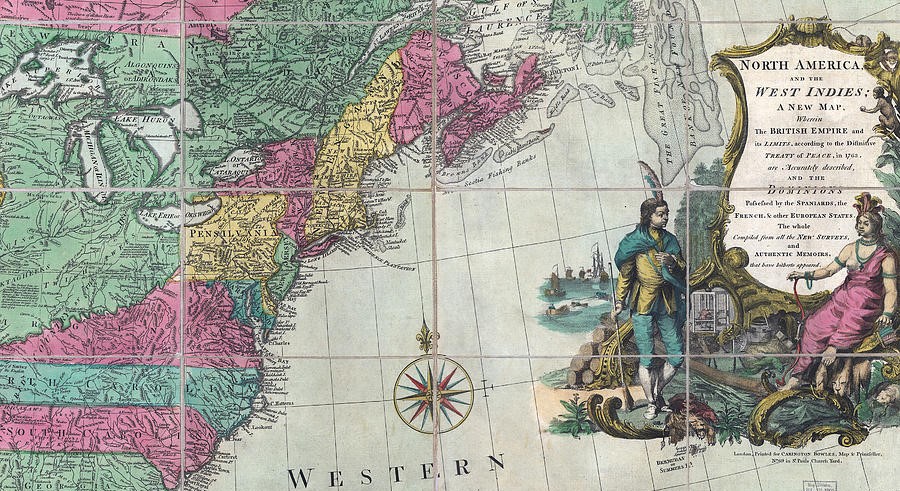
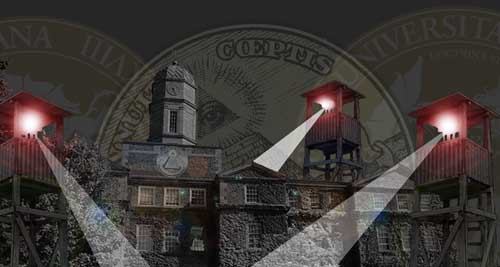
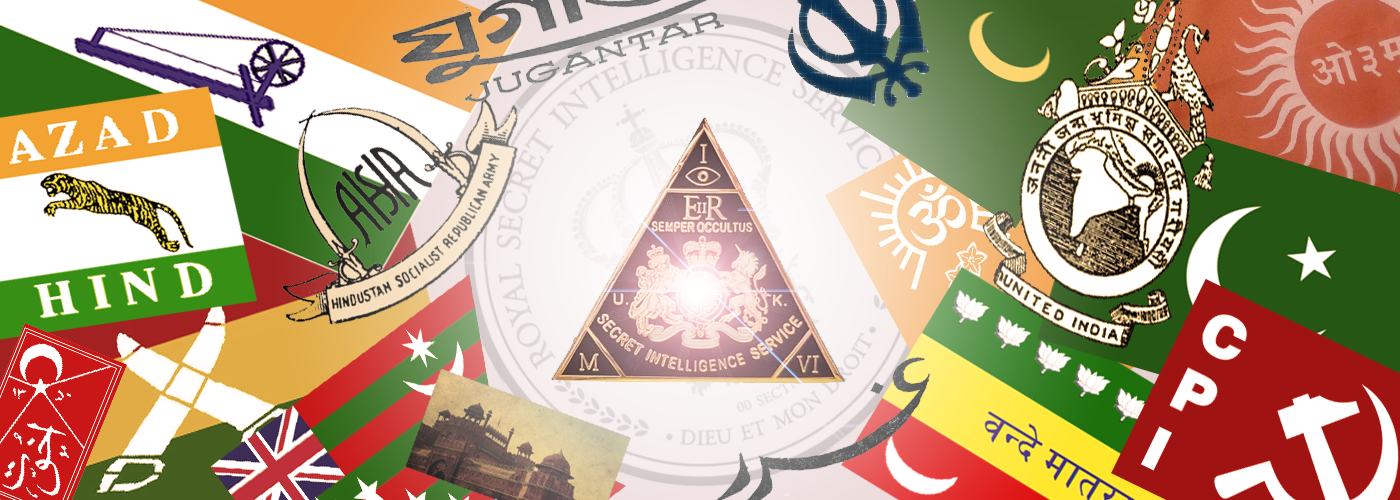


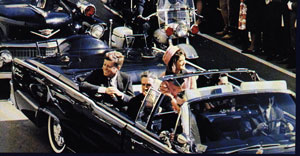

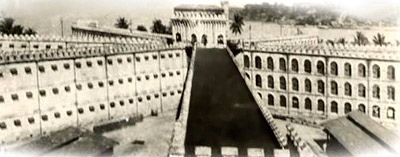


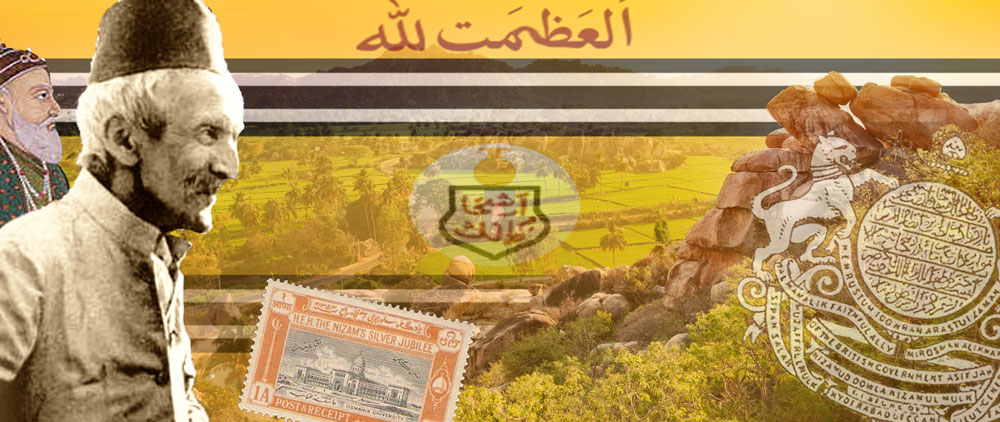





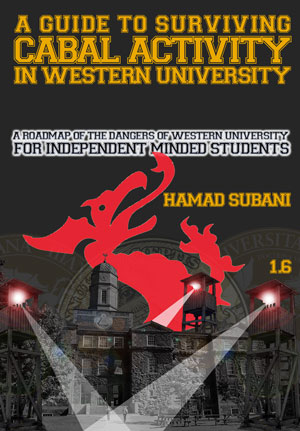
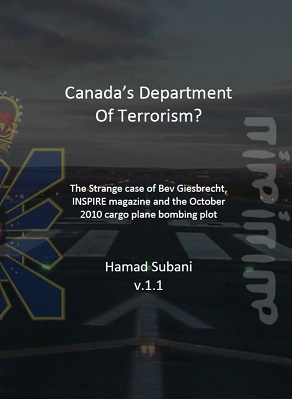
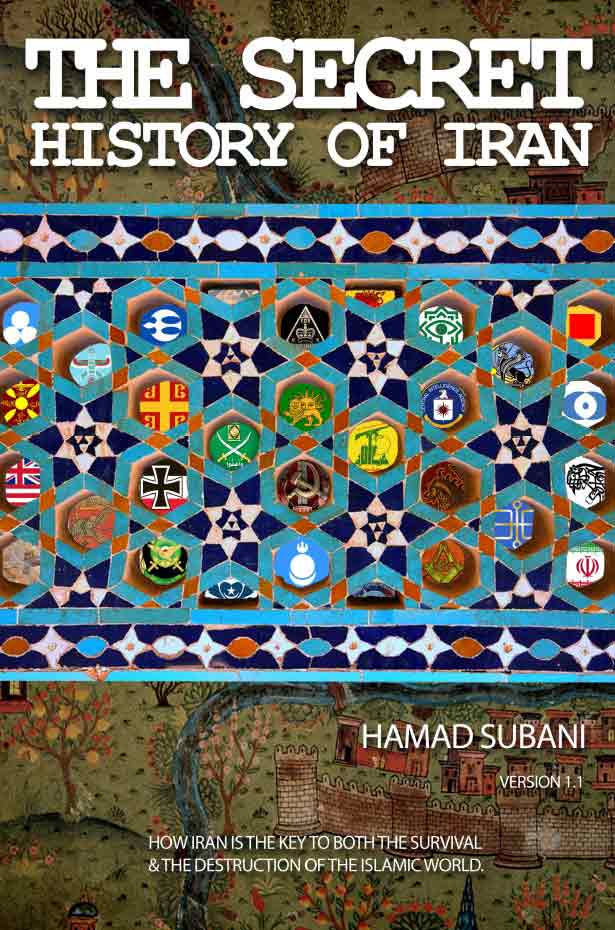
Probably all of them are true. It could be a combination of things. Where are pics of modi attending his shop? Even my grandpupu has pictures from his youth and he lived in the gutters
Dear sir
your research is revolutionary but your occasional (& deliberate) attack on modiji & past Hindu freedom fighters will ultimately spoil your hard work….people might consider you another modi hater trying to profess propaganda……..please keep this in time before an average and unbiased reader do not distances away from your precious research
dear sir
many thanks for sharing the info on Buddhist designs…now i feel proud to be a hindu
The kind of comtent you won’t easily find on the internet
Somebody drank too much, started imagining things, got paranoid, and wrote this nonsense
modi looted $15 billion worth of new notes -that is why the secrecy. he is a criminal mid.
Just a few casual comments. Not saying all this is good or bad. Time will tell what happens. Certainly it won’t be perfect. Modi has said since the beginning of his administration that he wanted India to go cashless. I guess some people were not listening. He started by getting almost all citizens biometric ID-ed. Amazing feat but almost all Indians have an ID now. Most don’t have a birth certificate but they have the biometric card. This enabled everyone to get bank accounts. In rural areas they can open an account through the post office. Right now they are earning roughly 8% which is good for the poor. Now they can finally earn interest on their money. When one opens an account they get a PAN number which is used for major purchases. All gold, property, cars, etc…will be tracked through the PAN number. Small amounts of gold and money are not taxed. This means the rich will pay taxes while they consume the bulk of these luxury items. To be honest most rich in India don’t keep large sums of cash around and if they do it is a small loss compared to their other assets. In addition to cards there is a booming business in pre-paid cards, like Paytm, which is accepted almost anywhere these days. Even the Indian tea man will take your 7 rupees through his Paytm account. This is a card that Indians can load with any amount which is not exposing bank details to anyone. Indians load up small amounts as needed which further protects anyone draining the card fraudulently. Cells phones are very common in India and apps are popular. Even grandma is on the cell.
Black money is used for property purchases, 60% is under the table, which has inflated the prices. Now prices are coming down which is bad for individuals, but good for the common man, if it continues, since they will be able to afford to buy property. The real estate sector will see a boom as more clients are able to buy. Black money is used for child slavery and human trafficking so hopefully this will break the back on that industry. That is a sad, but rea,l story here in India.
Answers to a few questions I saw. I am no expert and others can add their two cents on this.
Did the Indian Government really assume that “terrorists” too, would line up in front of banks with bags of cash to exchange their banknotes and end up being busted?
Several Indians are washing money through their accounts for a %. I am hearing it is 20%. Poor people are lining up to make money for who-ever they can as this is a good side business.
Do “terrorists” have bank accounts in Indian Kashmir? (Sorry couldn’t resist).
Yes, home grown terrorist do have bank accounts they can wash money through. Again many Indians will wash money through their bank accounts for 20% fee. Will be interesting to see if they get caught down the road.
Most Indians are illiterate. Going cashless makes them even more vulnerable to fraud.
While Indians may be illiterate they are hardly naive or stupid. I actually think my America friends are more naive. This is why Westerners get scammed. Indians are much more cynical and suspicious in my opinion. Corruption and fraud is built into every part of life here and they are bit callous to others. Maybe too callous I think.
Conspiracy Theory # 6: The Demonetisation and Ensuing “Black Money” Witchhunt is an attempt to siphon India’s Gold Reserves
I heard of several raids on homes and business on the news here in India. Certainly this might become normal but the majority of Indians will applaud this if it is done on the “rich”. The demonetization is seen as making all Indians equal. Bribes are often given to politicians, police, getting into schools and even to get jobs in India, so those without money are shut out of this system of favors. Most resent it. Kids that come from money get into schools because the parents can gift the administration to get him in. It is not based on brains but who has money. So working hard has no merit in this word. It doesn’t elevate anyone. This economy is termed a “theft economy”. Stealing is common and about the only way an underdog can get ahead. This is a mindset and heart issue. Will take a long time to get rid of the notion in my opinion. Black money seems to be a byproduct of this. The rewards for screwing others needs to be taken away but not holding my breath. Most Indians think it is just being clever and there isn’t any moral, or ethical, value attached to it.